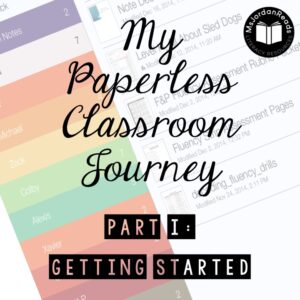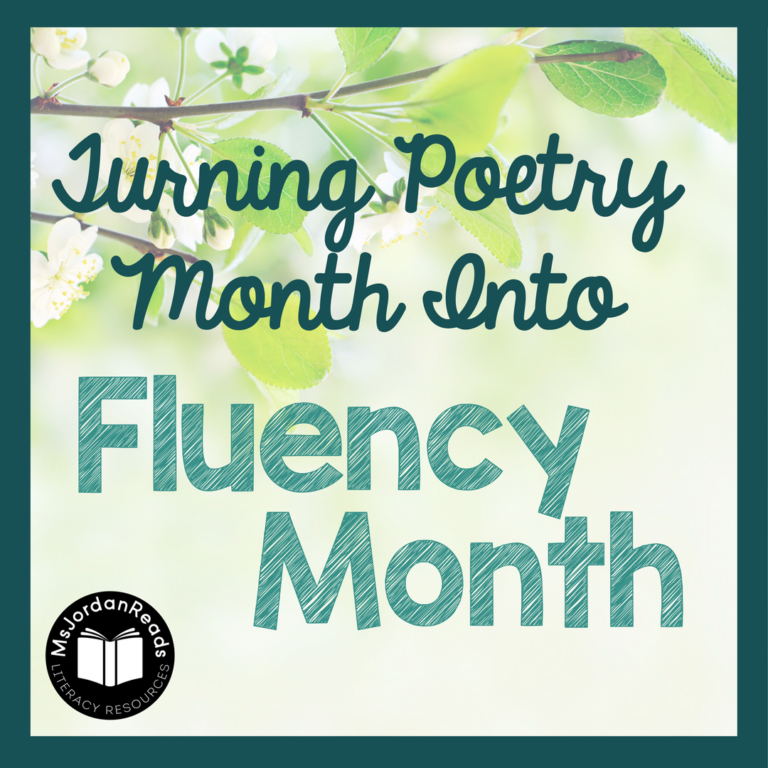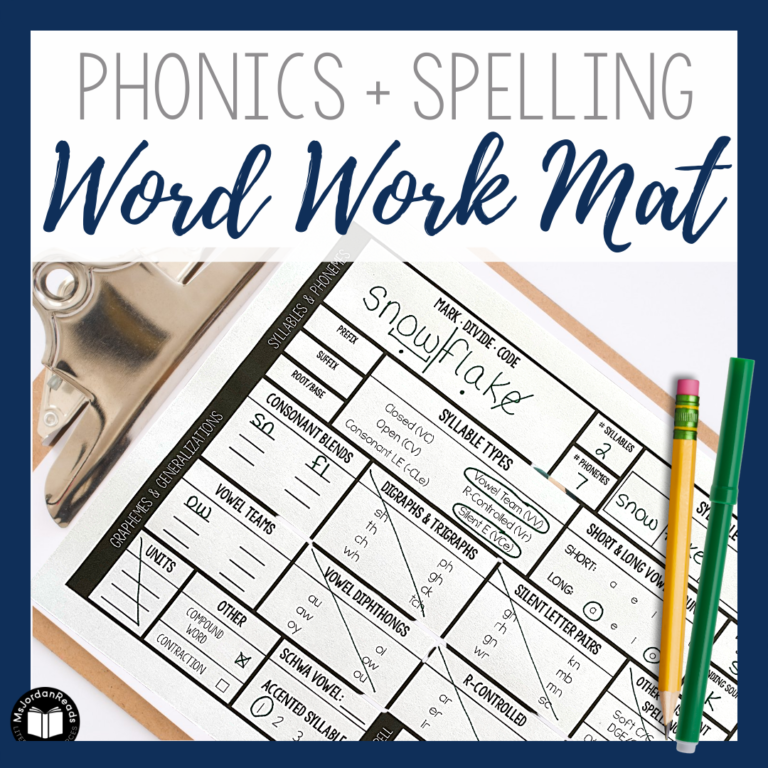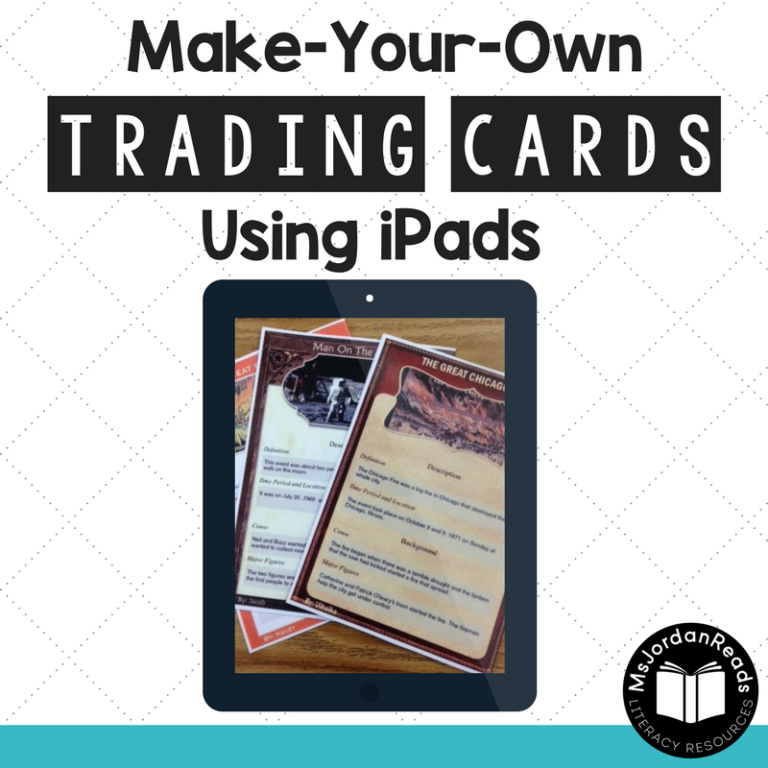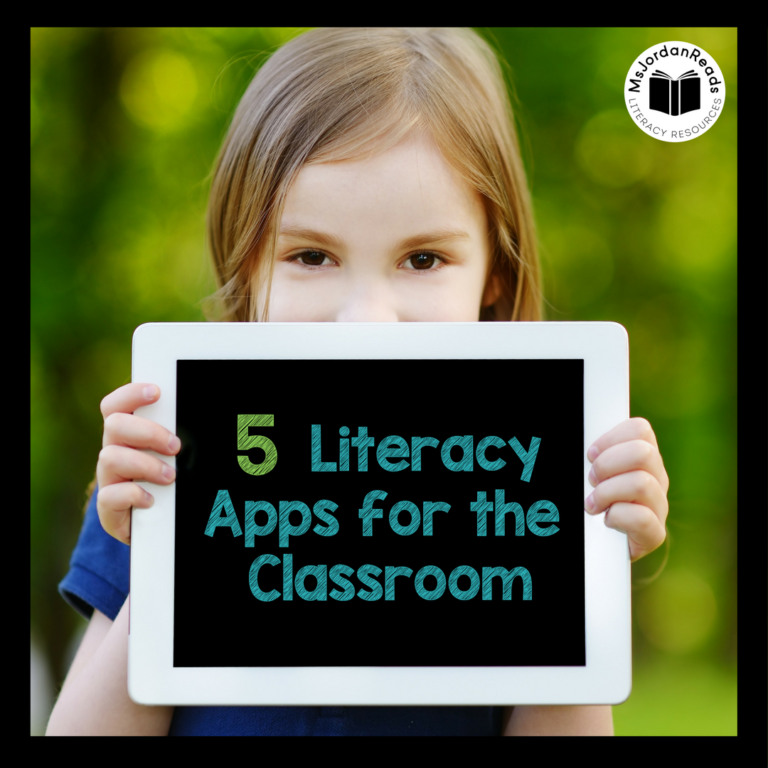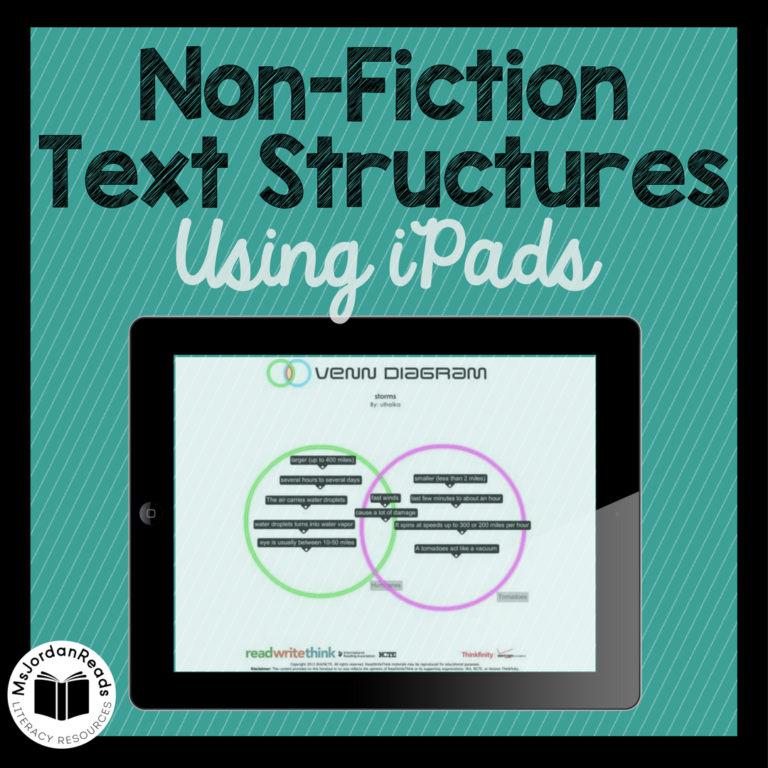My Paperless Classroom Journey: Getting Started
Are you 100% digital in your teaching?
If yes… you’re my hero. Seriously.
I’ve always been intrigued by 1:1 classrooms – the organization of them, the day-to-day management, the student accountability… all of it. It seems to be a direction that many schools are moving toward, and I can’t help but wonder if it will soon be the norm. Will all my students be completing their work on computers or iPads in the near future? Will our copy machines soon start collecting dust? (Will that mean I don’t have to make any more copies?! YES!)
The idea of a paperless classroom is exciting, but I’ve always been curious about “the back-up plan.” What if you show up to school one day and you don’t have an internet connection for the whole day? What if there’s an issue with the classroom management system? What if all the iPads break and your students start climbing the walls? Well, maybe that last one’s a bit dramatic, but I feel like my teaching nightmares would include ALL of those things.
Having one too many bad experiences with “technology fails” (i.e., losing the internet connection during STAR screening week, having a SMARTBoard crash during an observation lesson, etc.), I must say I’m nervous about relying on technology 100%. I suppose once our school’s renovation project is complete, which promises WiFi in every classroom and a more reliable internet connection throughout the building, I may be less hesitant. But for now, our school’s just not there yet, and therefore, I’m not 100% there yet. (At least that’s what I’m telling myself this year.)
After taking a few PD courses, reading countless blogs, attending conferences, and actually speaking with teachers who are in the trenches with a 1:1 program, I decided to take the first step. I have six iPads (5 student, 1 teacher), and I’m working toward integrating them into my day-to-day teaching. Slowly. The goal is for my students to use the iPads independently and for the tablets to be interactive tools for my students to practice their reading skills. The year is half-way over, and I must say – it’s going pretty well! 🙂
Notability
Last year, I learned about a great app called Notability which I downloaded for my personal use. I needed a note-taking app for my 101 meetings, and it was perfect for recording, organizing, and accessing my notes. I then started using it as a digital student binder for my classroom, to collect anecdotal notes and student data (more about this at a later date!).
This year, I started using Notability with my students. It has proven to be, by far, the best $2.99 I’ve ever spent on iTunes. (NOTE: This is not a product review. The opinion is completely my own and based on my own experiences with using the app!) I’m yet to find another app that I love more for my reading instruction. I will share a few FREE options you can explore, but if you have a few bucks to spare, it’s totally worth it. (Again, entirely my opinion.)
Features of Notability
Here are a few of the app features that I found to be most helpful to my RTI instruction:
- Annotate PDFs – Students can underline, highlight, take notes, and complete activities using the Notability tools
- Voice Recording – Students can record their voices reading for fluency
- Response Writing – Students can type or handwrite a response to a question or image
- Snapshots of Text – Students take pictures of objects or text to annotate, highlight, or add a written response
- Submitting Work – Students can export and share their “notes” as PDF files via DropBox, Google Drive, Email, etc.
Want to learn more? Read more about the features of Notability on the app’s developer website here!
Getting Started with Notability
Each student is assigned an iPad when they work in my RTI groups. With only five iPads, it’s pretty easy to manage. I don’t have my Notability accounts synced up, so students need to use the same device day-to-day. I created a student folder for each of them on their assigned devices, but you can easily use Notability without assigning student iPads. (NOTE: You could also easily connect your account to the iCloud to sync and back-up all your folders/notes across devices as another option.) Once the students open the app on their assigned device, they find their personal folder and open it up to access their “notes.”
Annotating PDFs
Annotating PDFs is my starting point with all students. They love underlining, highlighting, and taking notes on PDFs. I have many intervention activities that I’ve uploaded for student practice (check out the examples below!).
I link all the iPads to my teacher Dropbox account, and then I allow the app to access my account. This allows students to import PDFs easily to each of their folders. (You may want to do this part for them first until they’re able to navigate Dropbox successfully!)
The best part is you can select specific pages of a PDF to upload to a student folder. If it’s a 50 page packet, I can upload a single page or a smaller range for them to complete. This keeps the student work organized sequentially, AND the students don’t have to search through large files for the task pages they need to complete.
Annotating Tools
For most of the activities, my students use a fine tip stylus pen. After trying a handful of stylus options, my favorite to use with students is the Musemee Notier Prime from Amazon. The rubber tip ones work too but just won’t give you as fine of a tip for writing. I have six for my classroom, but obviously it’s more expensive to purchase a class set, so feel free to have students use their fingers or knuckles. If you’re just having them underline or highlight, a finger works JUST fine!
Submitting Student Work
With just five devices, I could easily go into each one to access student work, but that’s time-consuming. I have students export select “notes” to a shared Dropbox folder. I don’t need to see every page they complete, but every once in a while I like to see a sample of their work. They can send a screenshot (which automatically syncs to my Dropbox account), or I’ll ask them to pick a page to send me via the sharing buttons. Once the files are sent, I can access the files from my computer or teacher iPad without having to go into the five individual devices. This also allows me to add the work samples to my digital binder of student work samples and progress monitoring notes.
Some teachers with 1:1 classrooms use management systems like Edmodo or Schoology. These Learning Management Systems (LMS) allow you to post assignments and collect student work via an app or website that functions the same as many social media sites. Students can shift back-and-forth between the LMS and Notability to complete assignments and then submit using the linked Dropbox account. (This structure is great for students who use their own personal devices or if you’re unable to assign devices to each student.)
Looking for Step-by-Step Directions?
Below are a couple of resources I found helpful for navigating and getting started with the app. The tutorials introduce you to the features and provides directions for how to use them!
- Notability AWESOME! (A Review & Tutorial)
- Notability Tutorial (PDF includes diagrams of note-taking screens & app buttons. The app price is outdated, but the visual tutorial is aligned with the current version of the app!)
Are you on the fence about whether or not to take the first step?
A few Pros & Cons to consider (for whatever they’re worth!) —
PROS:
- I’ve saved a TON of time and paper with not having to copy every packet for every student!
- I have copies of ALL my students’ work in one spot! (This is great for monitoring progress and making instructional decisions.)
- Students are SUPER motivated to complete tasks and activities!
- Students are now tech-savvy 21st century learners!
- I’m becoming technologically “fluent” (and so are my students!)
CONS:
- It takes time to “go digital” — scanning pages, uploading PDFs, organizing folders, creating a management system that works for you, etc. (TOTALLY worth it, though!)
- Students will need TIME to learn how to upload documents, annotate PDFs, submit work, and function independently on the device. It’s a lot of upfront modeling and practice, but once the students pick-up the skills they are pretty self-sufficient. (Many students have devices at home, which helps with basic device navigation!)
- Technology access. A paperless classroom only works if you have access to technology (obviously). When I push-into different rooms for reading support, or if my groups are larger than 6, I’m stuck.
- It’s hard to share my archived student work samples at the end of the year with other teachers who are NOT tech-savvy
- Technology let-downs. (Let’s face it… technology isn’t always reliable and “technology fails” will happen.)
Notability Alternatives (FREE)
In my efforts to find FREE alternatives to Notability, I came across a few websites that review the features of each. As you will see, there are MANY great free options to try out and explore before making the decision to purchase an app. Some of the reviewers prefer those apps OVER Notability. I have not explored enough of them to share my comparison feedback, but they’re definitely worth checking out for yourself!
- The Best Classroom Alternatives to the iOS Notes App (JonathanWylie.com)
- Alternative Apps to Notability (AppCrawlr)
Here are some of the FREE Apps for Note-Taking:
Stay Tuned for Part II!
This weekend, I’ll be sharing different interventions I use with my students that are perfect for Notability. The list keeps growing, so I’m sure there will be many follow-ups to this post. In the mean time, follow me on BlogLovin‘ or subscribe to my emails so you don’t miss my next one! 🙂
(Update 1/25: Here’s the LINK to the next post in the series about the Digital Resources I use with Notability. Continue following my journey!)

